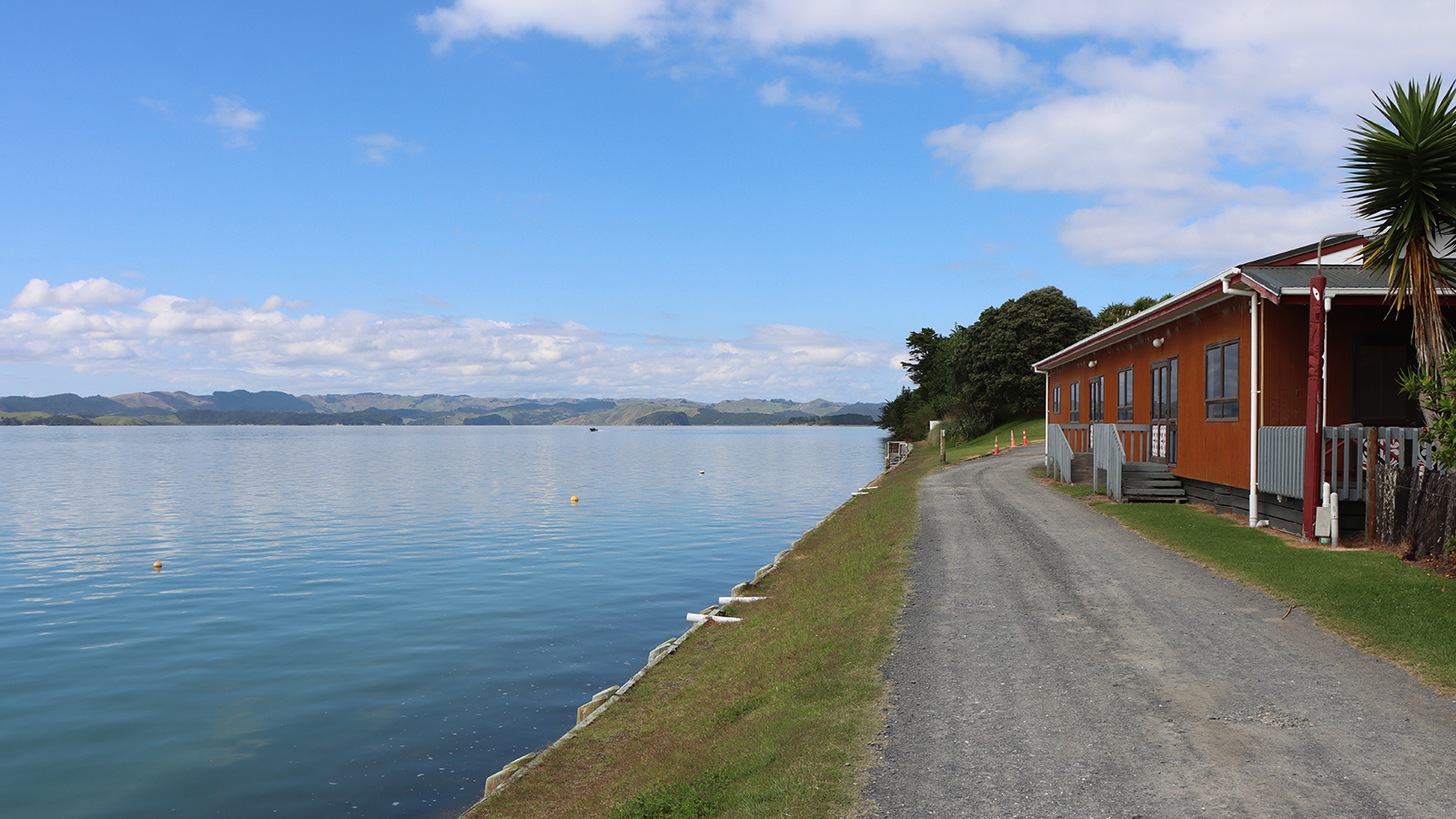Onepū Charitable Trust and Te Taiao o Kawhia Moana are hoping to find solutions to the coastal restoration problems they are having when they host this year’s New Zealand Coastal Restoration Trust conference, sponsored by Waikato Regional Council.
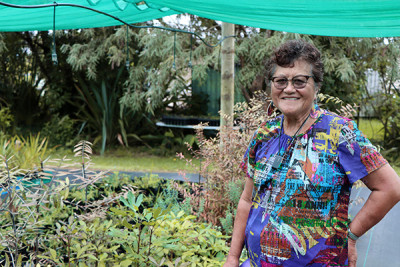
Horahaere Daisy Scott at Kāwhia Moana Native Nursery.
Vehicles on the foreshore destroying plants and habitat; coastal erosion undermining taonga pōhutukawa; volunteer recruitment difficulties; and even quails invading the local nursery to help themselves to precious sand-binding kōwhangatara/spinifex seedlings.
Onepū Charitable Trust and Te Taiao o Kawhia Moana are hoping to find solutions to the coastal restoration problems they are having when they host this year’s sold-out New Zealand Coastal Restoration Trust conference, sponsored by Waikato Regional Council.
Horahaere Daisy Scott, of Ngāti Mahuta and Ngāti Hikairo and a trustee of Onepū Charitable Trust, says the two partnering organisations put up their hands to co-host the conference at Maketū Marae in Kāwhia to promote the coastal restoration work done by the community and to learn from experts
and other community groups.

Onepū Charitable Trust was set up because pōhutukawa along the shoreline west of Maketū Marae had been lost to the sea, with erosion getting close to houses.
Horahaere says tangata whenua passionate about the whenua started the Onepū Charitable Trust in 2008 in response to community concerns about the coastal erosion, with the multi-stakeholder group Te Taiao o Kawhia Moana set up in 2018 because “we realised Onepū couldn’t do all the restoration”.
Kāwhia, including Te Ahurei, the historic hill near Maketū Marae with the Tainui waka resting at its base, is one giant sand dune and has its fair share of coastal erosion issues.
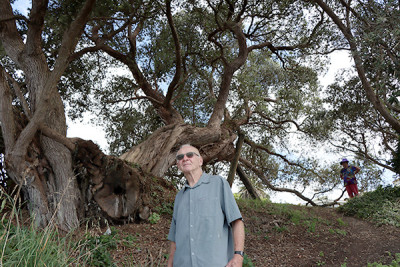
Ray Montgomery and Te Papa o Karewa, which is being undermined by coastal erosion.
Pōhutukawa along the shoreline west of Maketū Marae had been lost to the sea, says Horahaere, with erosion getting close to houses and the marae. Coastal erosion is also starting to undermine the two nationally important ancient Pohutukawa: Te Papa o Karewa, which the Tainui waka was tied to when it landed in Kāwhia about 800 years ago, and Tangi Te Korowhiti. A temporary wooden brace is being used to support Te Papa o Karewa while a permanent solution is built.
“You can’t control the water and the tide, but the trust wanted to do something about the erosion,” says Horahaere.
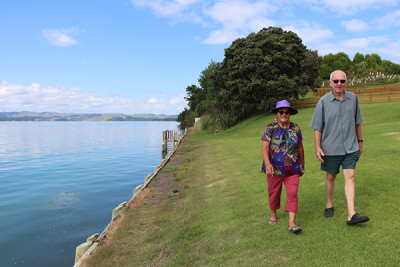
Horahaere Daisy Scott and Ray Montgomery walk along the seawall that protects Maketū Marae from the sea.
So that meant planting to try stabilise the sand (onepū), and, with help from Waikato Regional Council’s Coastcare team, the community has been planting ever since.
“The first planting we did on the coast was destroyed because of vehicles,” says Horahaere, and “four years ago we had our plantings destroyed by cattle”.
The trust wants the vehicle access from the inner harbour to Te Puia Springs on the ocean beach to be stopped and blames the traffic for the loss of pipi beds and dotterel nests.
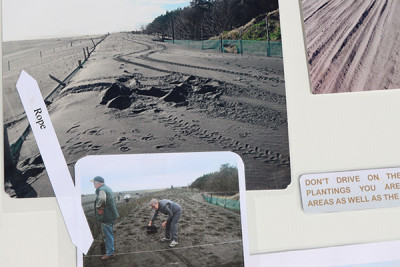
The first planting on the coast was destroyed by vehicles.
Planting in black sand is also an issue. When the community started planting Ahurei about five years ago, because it was a bare hill covered in kikuyu grass “too steep to mow” and to help protect it from erosion, many of the plants died because of the hot sand. This was resolved by heavy mulching.
Ray Montgomery, who retired to Kāwhia about 10 years ago, spends much of his time keeping Ahurei tidy and weed free. He’s constantly weeding among the establishing plants – “that’s the hard part; planting is fun, but no one wants to do the weeding” – and he propagates seeds for more plantings at Kāwhia Moana Native Nursery.
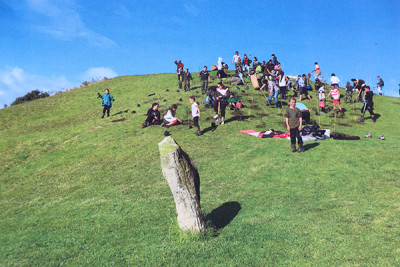
The community started planting Ahurei about five years ago because it was a bare hill covered in kikuyu grass “too steep to mow” and to help protect it from coastal erosion.
“I had about 1200 spinifex growing for the next planting season and the quails came at night and pecked them all out, ate the seeds and left the husks on the ground” says Raymond, shaking his head but laughing over the loss of the difficult-to-propagate sand-binding grasses.
The 500 or so plants that survived have now been enclosed in one of the tunnel houses he built at the nursery.
Horahaere and Ray will be speaking at the conference about their experiences, with the nursery, Te Papa o Karewa and the dunes at Tom French Grove, where much planting has been done, included as field trips.
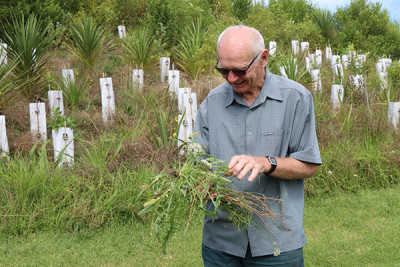
Ray Montgomery spends much of his time keeping Ahurei’s plantings weed free.
The conference also includes guest speakers from Waikato Regional Council: Deputy chair Dr Bruce Clarkson, who will give a presentation on behalf of the council as premier sponsor of the event; Pest Plant Officer Frances McKinnon, who will hold a workshop on identifying pest plants and minimising impacts on site; and Senior Biodiversity Officer Moniqua Nelson-Tunley, who will hold a workshop on pest animal monitoring and control in coastal ecosystems.
Coastal restoration in the Waikato
The Coastal Restoration Trust of New Zealand developed the model of community-based coast care groups restoring their local coastal areas, with the first groups set up in the Waikato region – at Port Waikato in 1992 and Whiritoa in 1993.
The trust has been working in partnership with Waikato Regional Council for over 30 years, and there are now more than 25 groups working across the region.
The council provides plants, in-kind resources and co-ordination to the restoration projects, while the trust provides technical knowledge and advice.
Coastal ecosystems are vulnerable to erosion, and this is exacerbated by climate change-induced sea level rise and increased frequency and severity of extreme weather.
The trust holds a conference in a different region of the country every year.
Attendees include staff from local and regional councils, the Department of Conservation and other environmental agencies. Coastcare groups from all over New Zealand are encouraged to attend, with the registration fee kept very low for these volunteer groups.
The conference is an opportunity to showcase local restoration projects, to share knowledge and to keep practitioners up to date with recent research.
The 2024 conference will be based at Maketū Marae in Kāwhia, 20-22 March.

